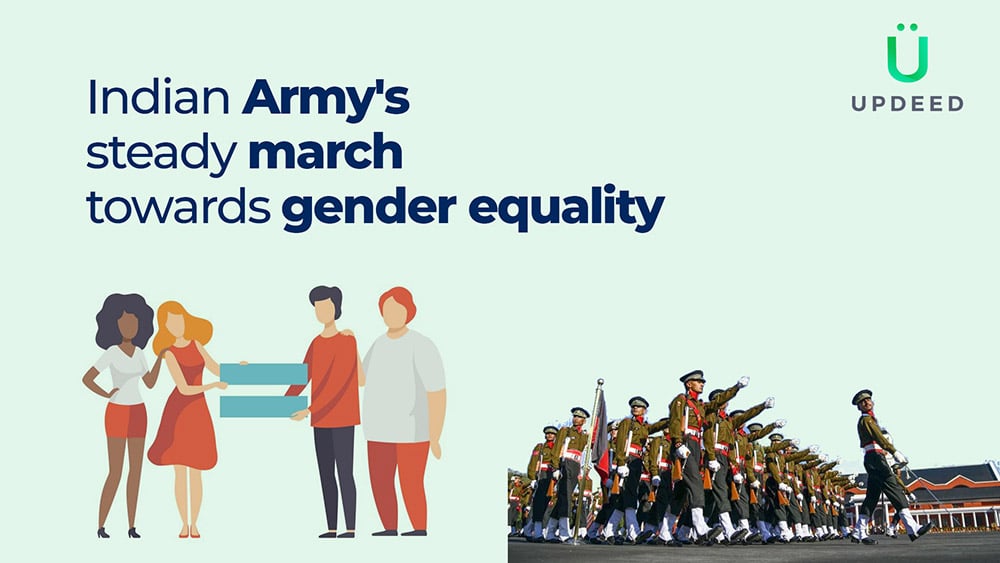Indian Army’s steady march towards gender equality
The Indian Army has been making steady progress towards promoting gender equality within its ranks. In recent years, the Indian Army has taken several steps to open up combat roles to women and support recruiting and retaining women soldiers.

Today only, the Indian Army has clearedover 30 women officers for command roles. Let’s have a look at some of the other recent steps taken by the Indian army:
- Indian Army has deployed its largest women contingent of peacekeepers at a UN mission
- Shiva Chauhan became the first female army officer to be on operational duty at Siachen Glacier
- Under its Mission Olympic Program, the Indian Army has recruited four talented athletes as Direct Entry Havildars in the Corps of Military Police.
A look into the history
- 1888: The Indian Military Nursing Service was established, marking the beginning of women’s participation in the armed services under British control. For a very long time, women’s employment in the armed forces was restricted to medical positions like doctors and nurses.
- 1992: Under the Women Special Entry Scheme, the army, air force, and navy started inducting women as short service commission (SSC) officers. For the first time, women were able to enlist in the military in fields other than medicine, including aviation, logistics, law, engineering, and executive cadres.
- 2006: The gate for women to serve as SSC officers for a maximum of 14 years opened up.
- 2008: Women were given permanent commissions in the Army Education Corps and Judge Advocate General departments.
One of the most significant steps taken by the Indian Army to promote gender equality is the opening up of combat roles to women. In 2016, the Indian government announced that women would be allowed to serve in combat roles in the army, navy, and air force. This decision was a major step forward for women’s rights in India and has opened up new opportunities for women to serve their country in a variety of roles.
In addition to opening up combat roles to women, the Indian Army has also implemented policies to support the recruitment and retention of women soldiers. One example of this is the establishment of child care facilities at army bases, which allows women soldiers to continue their service while also caring for their children. The Indian Army has also introduced flexible working hours for women soldiers, which enables them to balance their work and family responsibilities.
Despite these efforts, the percentage of women in the Indian Army remains relatively low, at around 3%. However, the Indian Army continues to strive towards increasing representation and opportunities for women in the military. For example, the army has set up a dedicated Directorate of Recruitment which is focused on recruiting and training more women for the army.
To conclude
The Indian Army has taken significant steps towards promoting gender equality within its ranks. The opening up of combat roles to women and the implementation of policies to support the recruitment and retention of women soldiers are important steps forward. While there is still a long way to go to achieve true gender equality in the Indian Army, the progress that has been made so far is encouraging.
The Indian Army will continue to work towards increasing representation and opportunities for women in the military and to create an environment where all soldiers, regardless of gender, can serve their country to the best of their ability.
Ready to make a positive impact in the world?
UPDEED is the place for you. Our free and open platform is filled with inspiring stories from individuals and organizations who are making a difference in their communities and beyond. Connect and collaborate with like-minded individuals from around the globe on UPDEED, and discover your own potential to create meaningful change. Join our community and make a difference.





